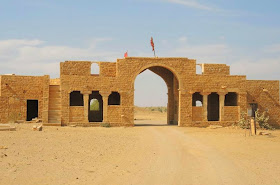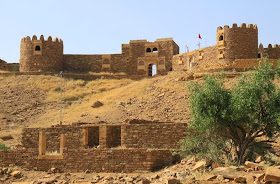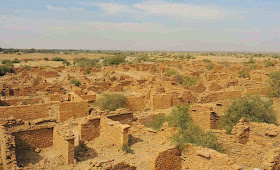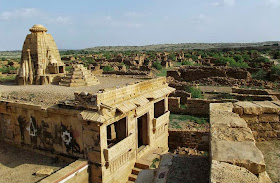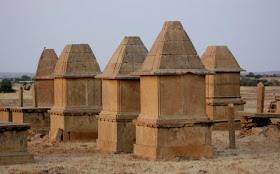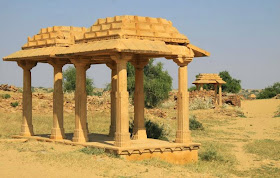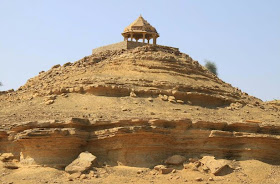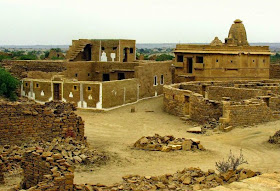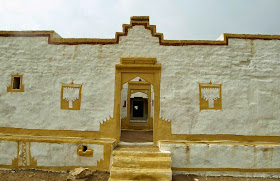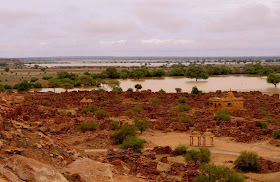The
Grand Paradi Towers which consists of three towers at Kemps Corner,
Malabar Hill, South Mumbai was constructed in 1975. The towers
consists of 28 storeys each, in one of the most affluent areas of
Mumbai. It is one of the oldest and biggest residential societies in
the city, well known for its elegant architecture and a spectacular
panoramic view of the city. An apartment in the Grand Paradi is an
indicator of property and status - few years back, a flat in Grand
Paradi Towers were valued more than Rs. 40,000 per square feet. The
Grand Paradi is the residence of some of the most wealthy and well
known personalities of the city including diamond merchants and
businessmen of Gujrati, Marwari and Sindhi communities.
The
Grand Paradi is considered one of the most coveted and begrudged
locations in Mumbai since a long time. Behind the facade of this
architectural beauty exists a sordid saga of hatred, suffering, and
suicides. Being a stinking rich locality, there might be lots of
financial issues in the pipeline even for the most affluent families.
The nemesis behind the multiple suicides in the society was once an
anomaly, then it became a trend and now it's a full-fledged jinx.
What secret is concealed underneath the Grand Paradi that instigates
quite a few of its residents to kiss of death?
There
has been a succession of suicides by the residents of the Grand
Paradi within the society as well as outside the society. The events
started with the death of a young girl who jumped to her death in the
later seventies.
Mr. Vasudeo Dalal and his wife Tara Dalal committed suicide by roping themselves and jumping off the balcony of their eighth floor apartment on Sunday, June 14, 1998. Mr. Dalal had even left a suicide note alleging that they were disgusted and depressed by their lives due to continuous harassment by their son and daughter in law. The police arrested Balkrishna (48) and his wife Sonal Dalal (45) couple of days later on the charges of abatement of the elderly couple. During the court proceedings, the manager of Grand Paradi testified that Balkrishna and his wife wanted to get the flat transferred in their name. Nalini, Vasudeo's sister, also testified that Balkrishna and his wife used to abuse her brother.
During
the seven years of trial, the Dalals were financially insecure. Their
spare parts business was not doing well, and they might had been in
debt. After defending themselves for seven long years, on the
judgement day on Monday, March 28, 2005, at 6:30 AM, the Dalal's -
Balkrishna, his wife Sonal and their 19 year old daughter Pooja
committed suicide by jumping from the same apartment in the same
manner as their parents did. It is quite possible that the Dalal's
decided to take this extreme step because Balkrishna feared that he
and his wife would be convicted and may hear an adverse verdict in
the case. A ceremony was later performed to get rid of evil spirits
from the eighth floor apartment, and the apartment in which three
generations of the same family leaped to their death is sealed off.
On
Thursday, April 26, 2001, 36 years old Narayan Ramchander who was a
domestic help of the Sanghvis, threatened to jump of the parapet of
the 19th floor of the Grand Paradi complex. It was a 10 hour long
suicide drama which started when he was accused of stealing. At 9:00
AM he yelled at the watchmen from the window ledge, and the panicked
watchmen rushed to the Sanghvis. All efforts of the Sanghvis (who
were acquainted to him since last 15 years) to allure him into the
flat went in vain as he dodged them and settled on the edge of the
parapet. Eventually, the police was informed and the four engines of
the fire brigade came. However, the snorkel (a hydraulically elevated
platform used for firefighting) cannot be used because it was small
and there were lots of high trees around the building. A huge padded
circular cloth was also unfurled below by a group of fire officers to
catch Narayan in case he jumped. Narayan was offered water, and a
paan (beetle) which he gulped, but refused to back off. In despair, at 11:00
PM all the policemen and fire officers pretended to leave. The
curious public was also asked to leave in hope that he would retreat
from his precarious position. However, when this attempt failed,
most of the policemen actually left off sparing a few who kept
communicating to him for about six and a half hour. At 6:30 in the
morning, when Narayan asked for water and stretched his hands, he was
grabbed and pulled in. He was later detained by the police where he
alleged that he was mentally tortured by his employers and was
extremely tensed.
Charisma
Anil Kadakia, daughter of Anil Kadakia (honorary consul general of
Brazil) a resident of the Grand Paradi, committed suicide on
Saturday, October 28, 2006 in public. She was a 24 year old girl who
jumped from the railing along the edge of the balcony of the fifth
floor of Navyug Sagar building at Teen Baati, Walkeshwarat, Malbar
Hill. She had been in depression since past 6 years and was
undergoing treatment. She had earlier made two unsuccessful suicide
attempts, once by cutting her wrist veins. On Saturday, she left her
house at 12 noon to meet her boyfriend Nipun Doshi, who lived in a
flat at the fifth floor of Navyug Sagar building. The Kadakia's were
not in favour of an alliance with the Doshi's due to their middle
class background. Charisma suddenly went out to the balcony and
jumped before Nipun had even a clue of what was going on!
Mr.
Jain who was also a resident of the Grand Paradi, and worked in a
brewing company committed suicide sometime in 2000. He was in his
early forties.
There
had been more than 20 horrendous and fatal accidents and suicides at
the triple towers since the building was constructed in 1975. Many
of these accidents involved children. Even a housemaid was involved
in an accident and its still not clear if she leaped or fell out from
the window. These freakish incidents have created a uneasiness in the
society and many believe the towers to be frightening, mysterious and
haunted. There have been a succession of havans and puja conducted in
the flat on the eighth floor, in which three generations of the same
family leaped to their death. The flat is sealed off and still
remains to be occupied.






